The Article
Disco-Antistat Vinyl Cleaning Machine From Knosti
11th September 2020
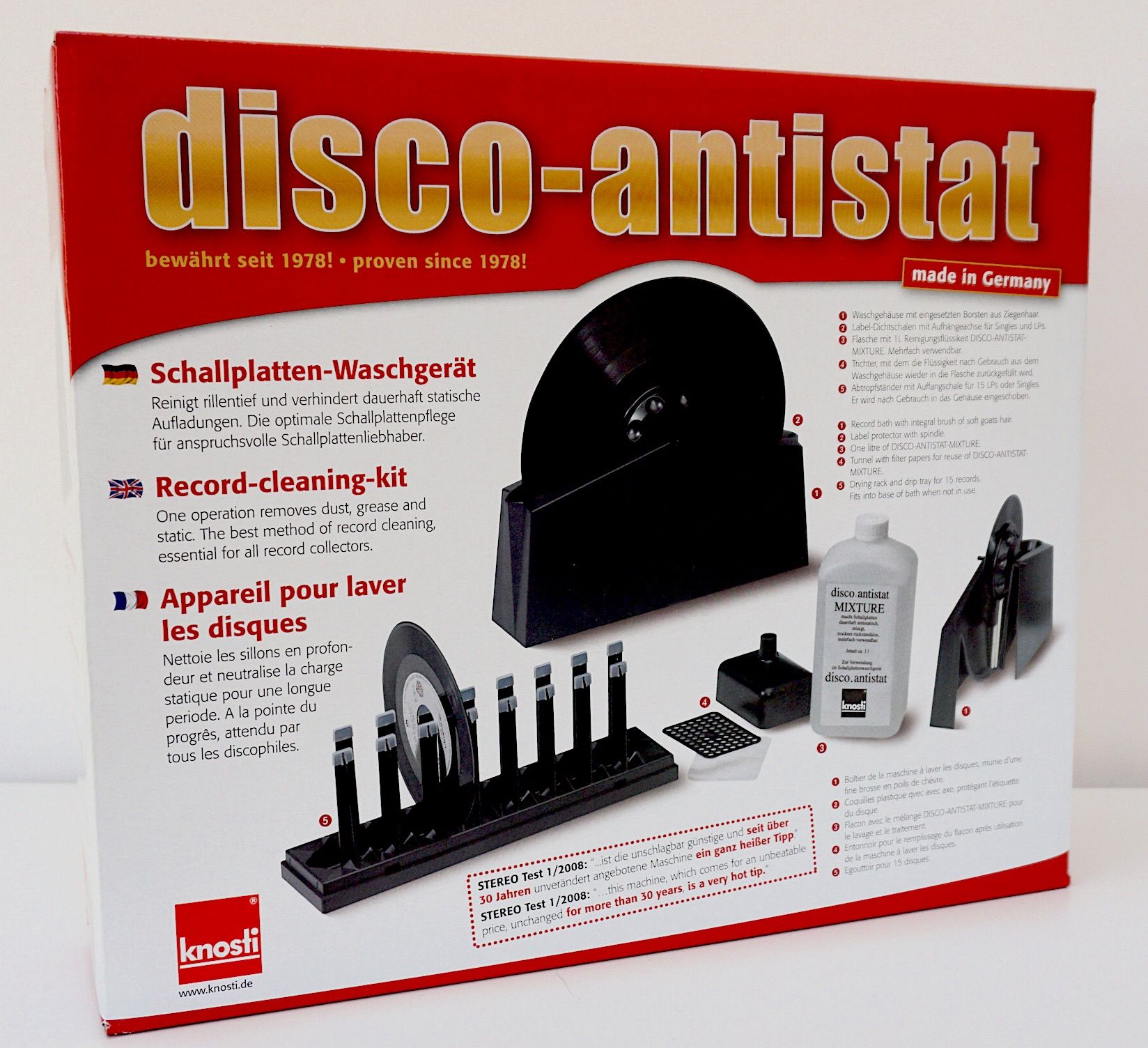
Offering a low-cost, manual vinyl cleaning solution, Paul Rigby readies his records for a quick wash and brush up
Blimey, we vinyl fans have a complex relationship with our records. Just look at one aspect of the relationship, cleaning the darned things. There are a host, a gamut of methods to clean vinyl discs. This format must be unique in offering so many cleaning solutions and so many complex ways to do it. I’ve never known so much effort to be placed into, what seems to be, a simple task.
Yet cleaning vinyl isn’t a simple task. If only it was, our lives would be so much simpler. Nevertheless, there is an odd sense of achievement, even fulfilment when you know that, not only have you cleaned your record well but the result of your hard efforts, has actually improved the sound quality to boot.
Spending serious time cleaning your vinyl collection brings with it solid, sonic rewards and thus is worth the time and effort involved.
I would say that vinyl cleaning is divided into three main categories: manual cleaning, cleaning via a RCM (Record Cleaning Machine) based upon a vacuum system and the high-end option, the ultrasonic cleaner.
Of course, as you might expect, manual cleaning is the cheapest option but often it’s the choice fraught with the most pitfalls. Mainly because this budget sector is filled with vinyl zealots who verge on the insane, cranks, conspiracy theorists, the militant and the downright weird. And that’s just my friends I’m talking about. Never mind everyone else. You don’t know who to believe, half the time. Some independent cleaning solutions seem guaranteed, not to clean you records, but melt them into a waxy lump
It’s a category filled to the brim with cleaning products that I wouldn’t touch with a barge pole. Its also a category that is filled with a plethora of home-brew options, urban myths and “recommended” cleaning solutions that are so scary to watch or hear about, they would give Edgar Allan Poe goosebumps.
More reliable manual record cleaning solutions still present a busy area though. It can be achieved by the use of different types of brushes, felt pads, gizmos and more with the help of a 1001 different liquid concoctions.
This is one of those proposed cleaning solutions. A cleaning machine that arrives with its own cleaning liquid. It’s been around for some time, I realise but I’ve never properly reviewed it. I thought it was about time.
This entry into the manual-cleaning field comes from Germany and has the wholly terrible name of Disco-Antistat. It’s true, I’ve never known such a poor appellation for any product of any stripe in my entire life.
That said, it’s a name you tend to remember. So…maybe that’s the point?
Arriving in a colourful yet solid box, the contents are neatly arranged, packed with plastic but again, feel solid and sturdy. There’s nothing overly flimsy in terms of structure and design here. Looking and handling the bits and pieces in the box, you feel that you’re getting your money’s worth.
INSTALLATION & USE
The parts are simple to use and the system is relatively easy to install. Out of the box, you will find the largest part, the bath. A one-piece structure. This is the part that will ultimately support the record while cleaning too. It’s easy to miss the fact that a drying rack is tucked ingeniously inside this bath. Turn the bath upside down and you will see the drying rack slotted underneath, pull that out and place it to one side for now.
Other parts include a two-part clamp and funnel-filter. We’ll get to the funnel in a moment. One half of the clamp includes a bayonet axle. This axle pushes though the record’s centre spindle hole, the other side of the clamp screws over this axle while the vinyl record forms the meat in the sandwich.
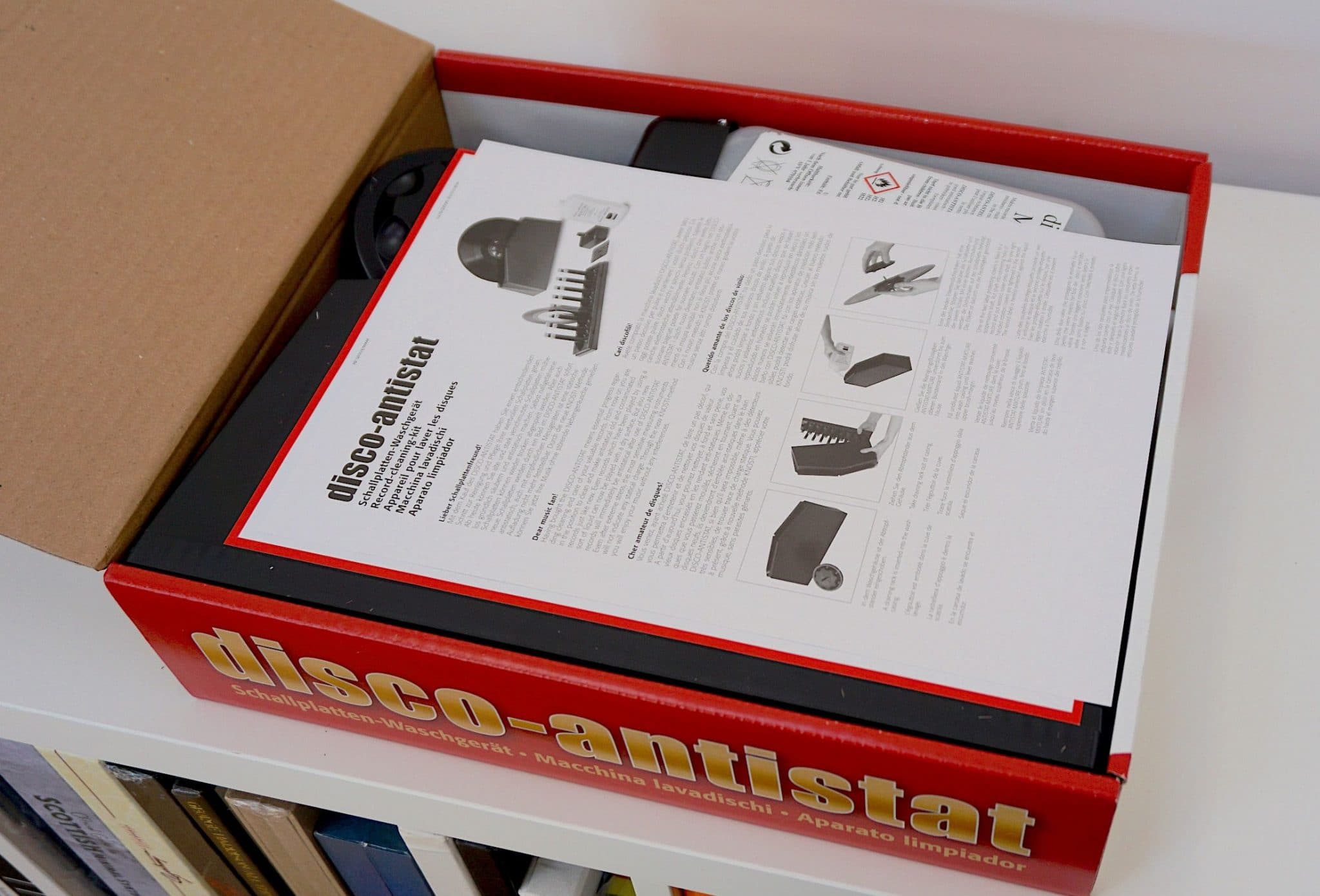
Both sides of the clamp can then be screwed to tighten. You’ll find that one side of the clamp tightens in a clockwise fashion and the other in an anti-clockwise manner which makes adding and removing the clamp easy to do.
Once the clamp is securely on the the record, you will notice that the clamps provide two services.
Firstly, there are two outer axle ends that fit into the bath runnels that allow you to rotate the record while on the bath to facilitate cleaning. Secondly, with the clamp in place, note how the clamp itself covers the record label, keeping it dry during the cleaning process. Simple yet effective.
To clean, you add the supplied cleaning liquid, which has already been diluted and is ready to use, to the bath (I’ll talk more about the liquid later on). The manufacturer wants you to pour enough liquid until the level reaches the uppermost part of the brush. I would advise against that otherwise you risk running too close to the label area. I know the label is protected by the clamps but, even so, I wouldn’t tempt providence here.
That said, I’d do a dry run, if you can, for each and every record you clean in case there are variations in label position and size. See below for advise on storing the bath liquid elsewhere while you do this. On average, I would suggest leaving about half a centimetre of brush poking out of the liquid. That is, have half a centimetre of brush exposed and dry before you see the uppermost level of bath liquid.
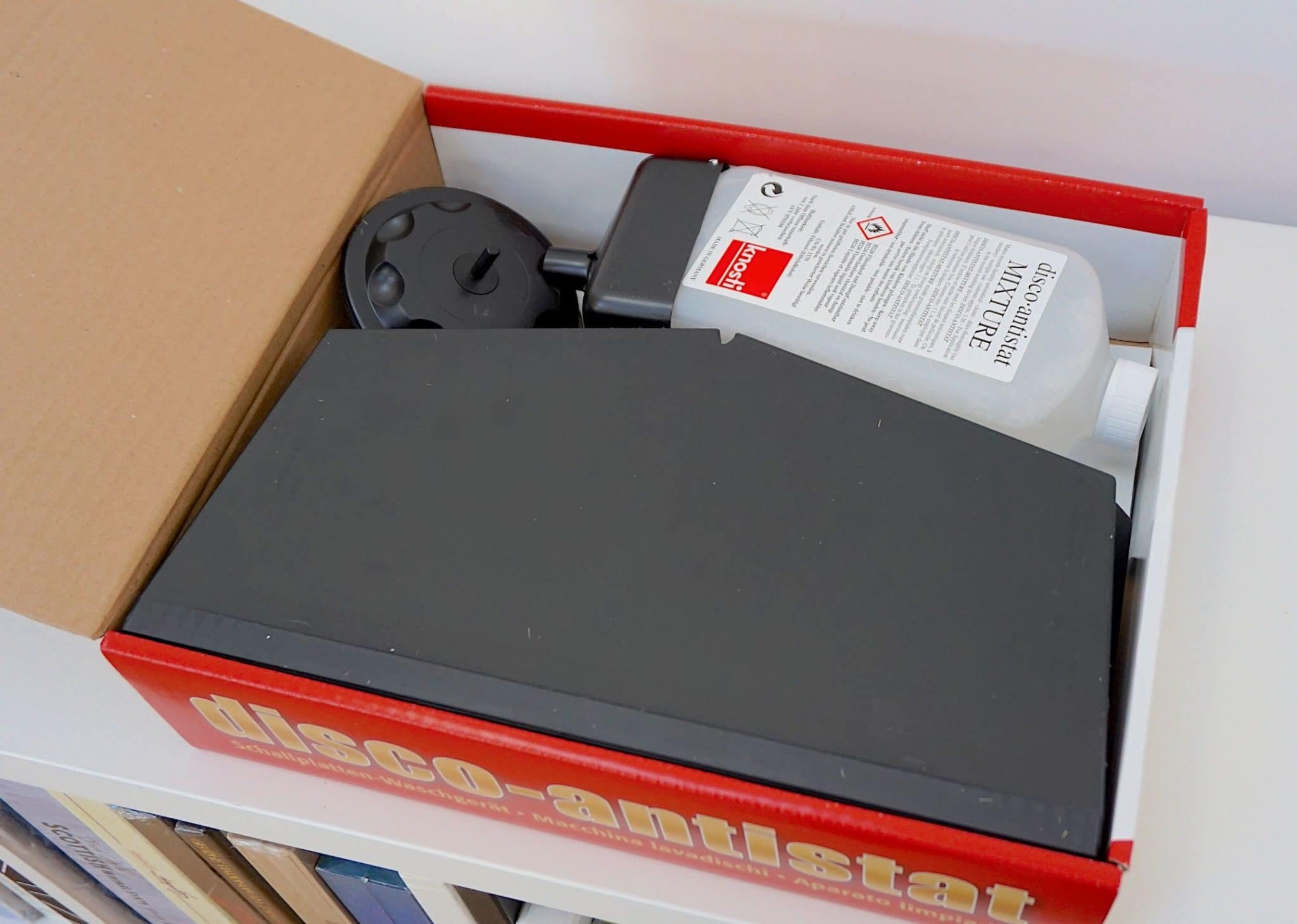
You insert the record into the bath itself. The clamp provides full support. Then you rotate the record manually to clean.
The instructions are a bit on the wishy-washy side (no pun intended) when it comes to just how many rotations you need but, during tests, I found that six full rotations to the right are sufficient. When completed, reverse your direction. Complete another six rotations in the opposite direction and you’re sorted. Rotating the record in this manner allows the brushes to attack the groove grime from both directions, encouraging stubborn muck to be dislodged. You may require multiple cleanings, depending on the state of the record.
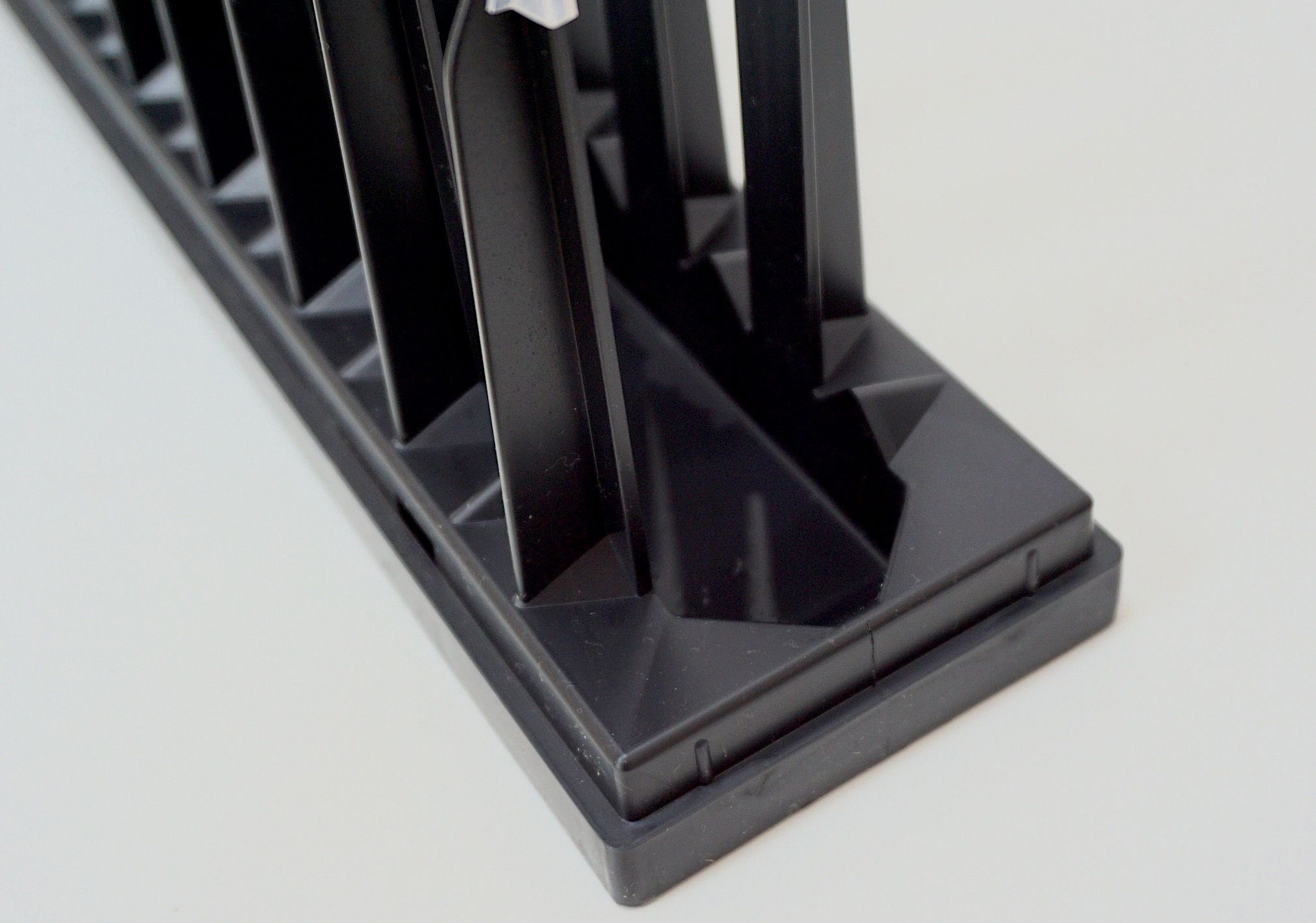
You need to then partially lift out the record by its clamp axles. Not all the way, allow liquid run-off to escape back into the bath and then twist off the clamp to remove it. Place the wet record vertically on the rack which will support the record featuring, as it does, a set of non-scratchy plastic pieces on the ends of each rack prong. Liquid excess will drip (from which it will no doubt eventually evaporate) into a channel cut out at the bottom of the rack.
Then you need to grab a coffee and wait for the record to dry.
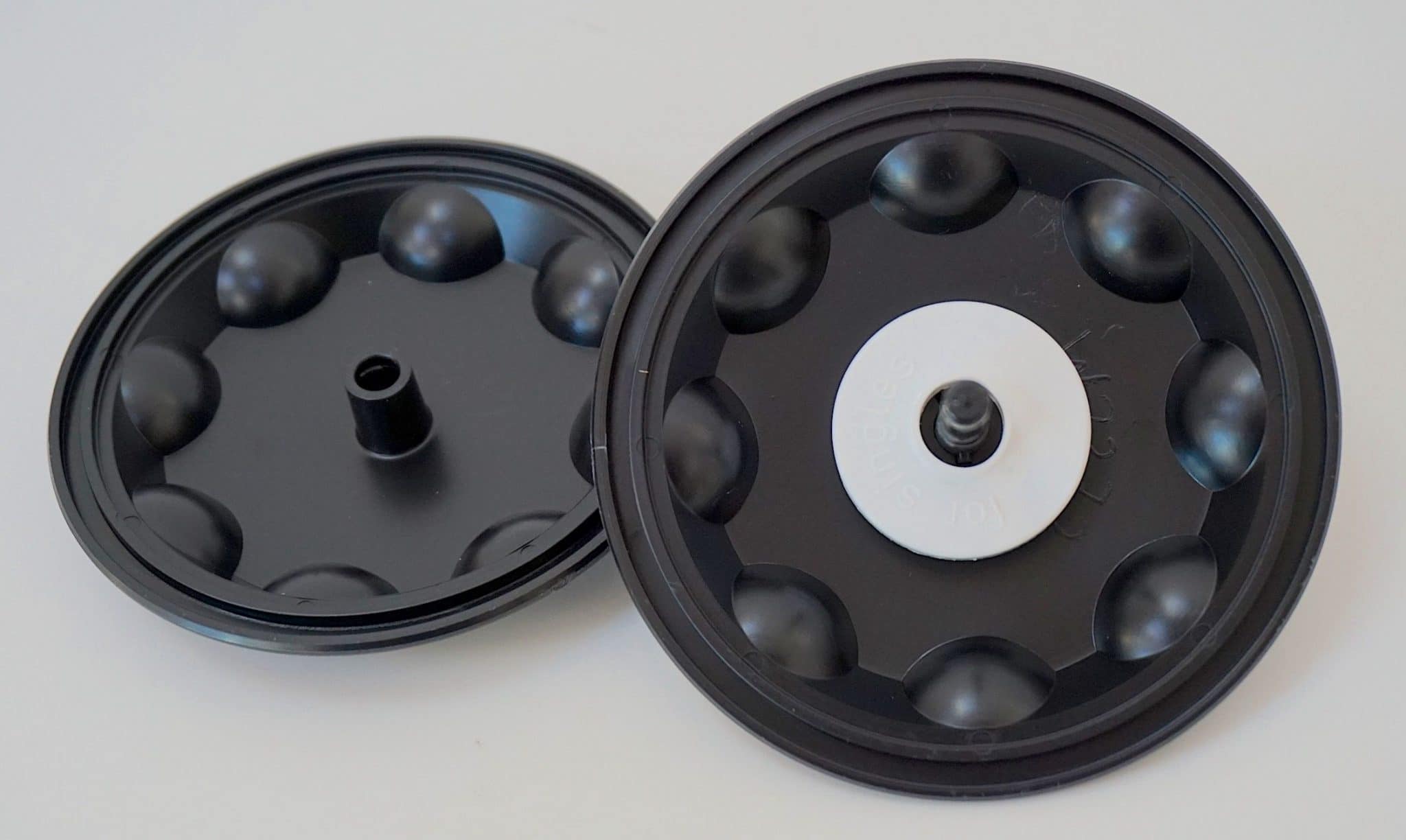
According to the instructions, you then place a filter in the supplied funnel, put the end of that in the end of the cleaning liquid bottle and return the bath liquid to the bottle while any muck will be trapped in the filters.
Really? It’s too much hassle and I wouldn’t bother. Depending on the grimy nature of your records, I would use the bath liquid until its too contaminated to use, and then dispose of the same. Then refill with new liquid. In between, to prevent airborne contamination, by all means cover the bath with a cloth or, a better alternative, shape a large piece of kitchen foil over the bath entrance which will be spotlessly clean (a cloth might not be), can be shaped into a rough bath shape and has an element of rigidity and weight so will stay put when the Disco-Antistat is not in use.
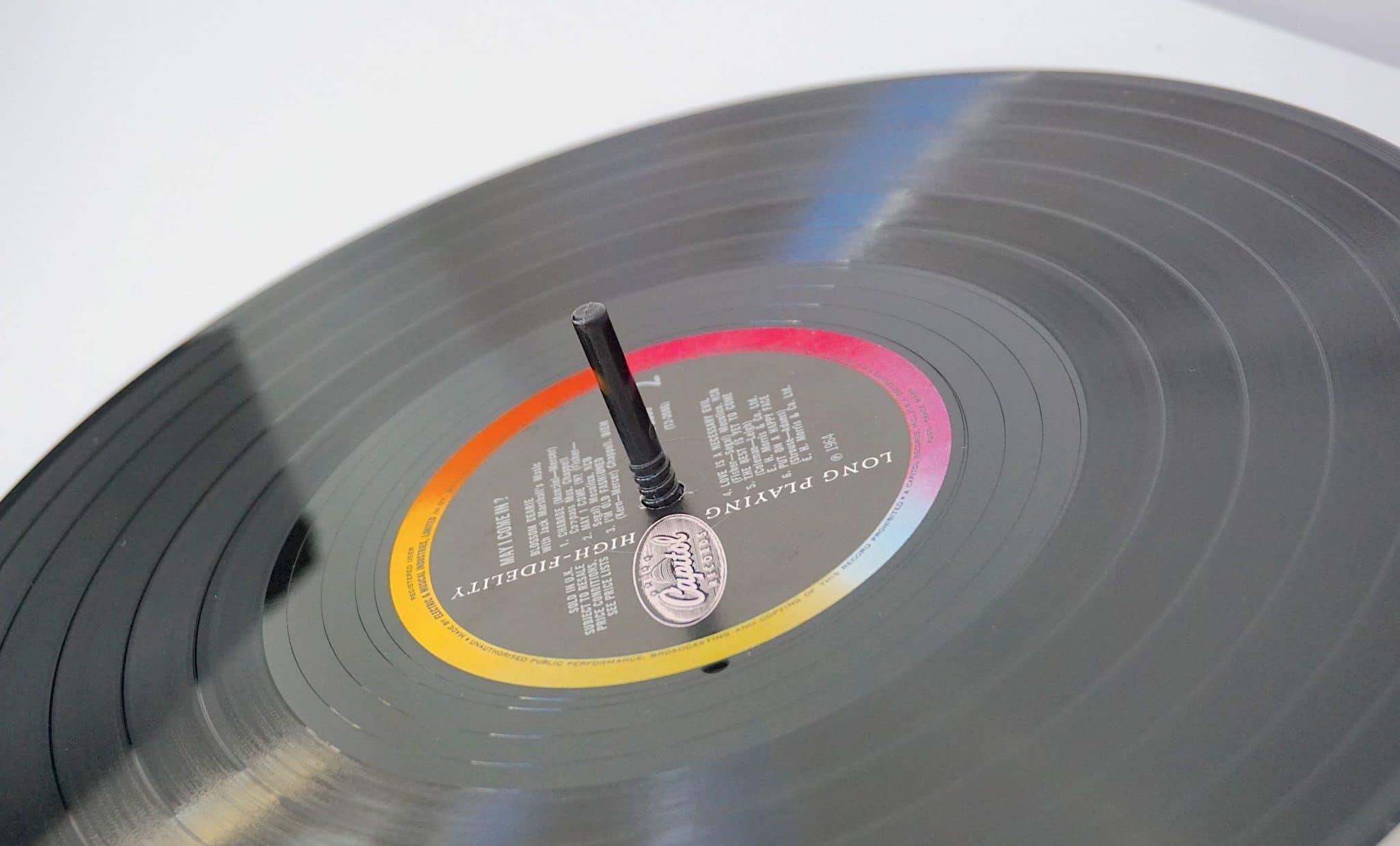
By all means use the funnel/filter combo as an interim cleaner but place the funnel over your own, seperate container such as a cleaned bottle and then pour the newly filtered liquid back into the Disco Antistat’s bath, cover and you’re done. If you do take this path, make sure you clean your temporary container bottle or somesuch and then swill it twice over with distilled water to remove any hidden impurities. Then cover the container when not in use. Again, foil is a good choice because a cloth can deposit tiny dusty bits, lint and the like.
SOUND QUALITY
I began with a tough cleaning task. I didn’t want to mess around here. Tough because this record – Barclay James Harvest’s Time Honoured Ghosts (Polydor) – exhibited none of the usual dirty record characteristics of snap, crackle and pop. Play was silent. The music sounded good. Yet, I wanted to see if the Disco Antistatic could improve the sound from that point. This record had never been cleaned by myself so I wondered if there was room for improvement.
Any by gum there was, absolutely. The improvements were stark, immediate and wide ranging.
Principally, the soundstage hit me first. It now sounded larger, wider, higher and definitely more spacious. The amount of space in and around the soundstage really allowed the band to roam now. In contrast, the soundstage sounded claustrophobic before the Disco-Antistat cleaned the record. Also the lead vocal had a slight edge, an unpleasant upper midrange attack that made listening at high volumes uncomfortable. That had gone now. After the clean, the lead vocal was balanced in its presentation but there was more than that. The ear could better pick up the contrasting reverb hanging off the lead vocal and the backing harmonies. The latter was drenched in the stuff while the lead vocal was drier and now detached from the band. This sort of subtle detail was always there but the Disco-Antistat clean had made the effect more obvious. The ear had to work less to catch the effects, basically.
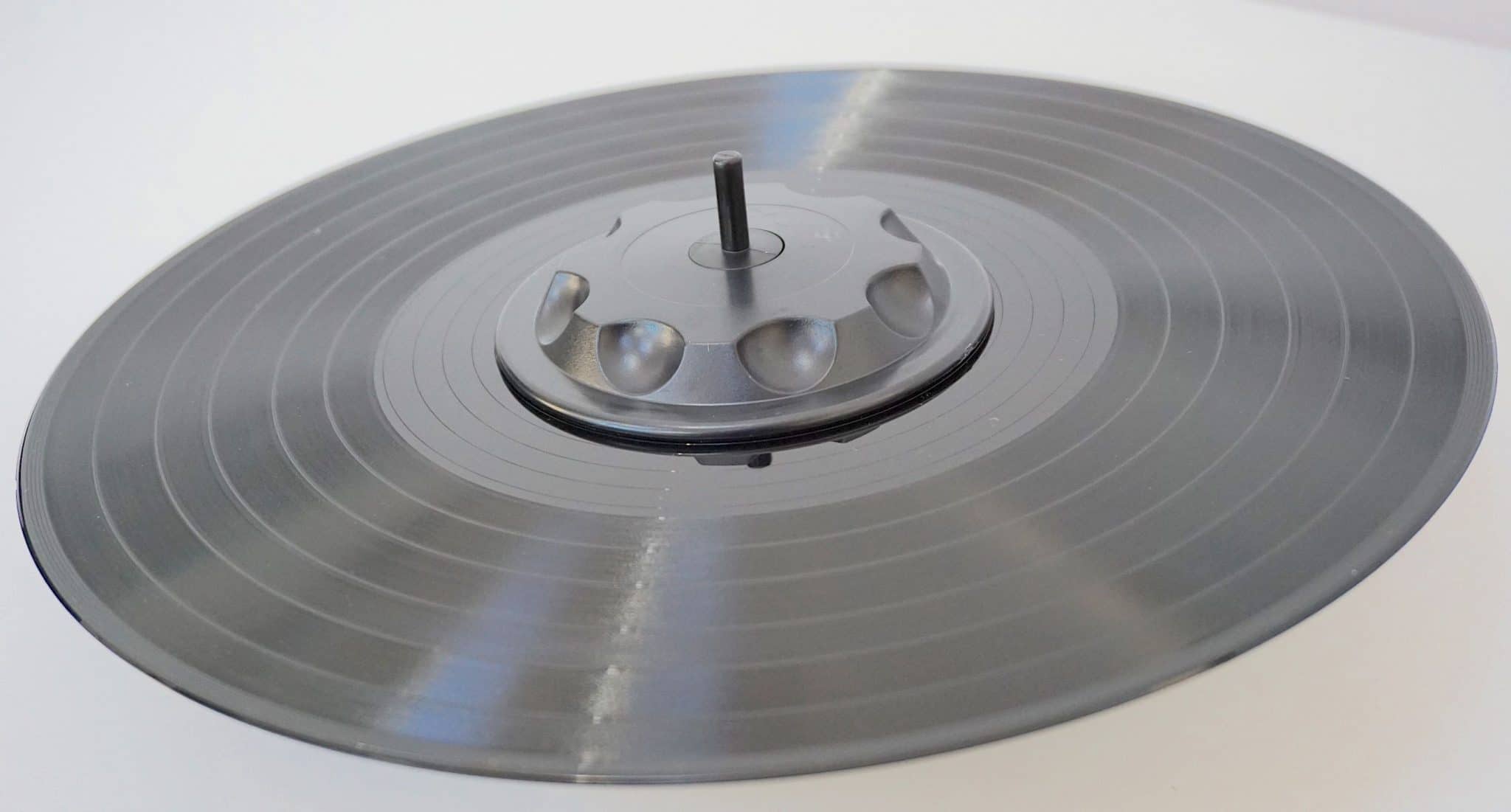
Instrumentally, bass offered more character and tonal accuracy while new detail emerged from the guitars. In fact, a rhythm guitar was pushed further forward into the mix, adding rich layering to the music.
During cleaning, what I loved about the mechanical process was the inclusion of the brushes themselves. I hear that these are goat-hair brushes which offers enough stiffness to get deep into the grooves.
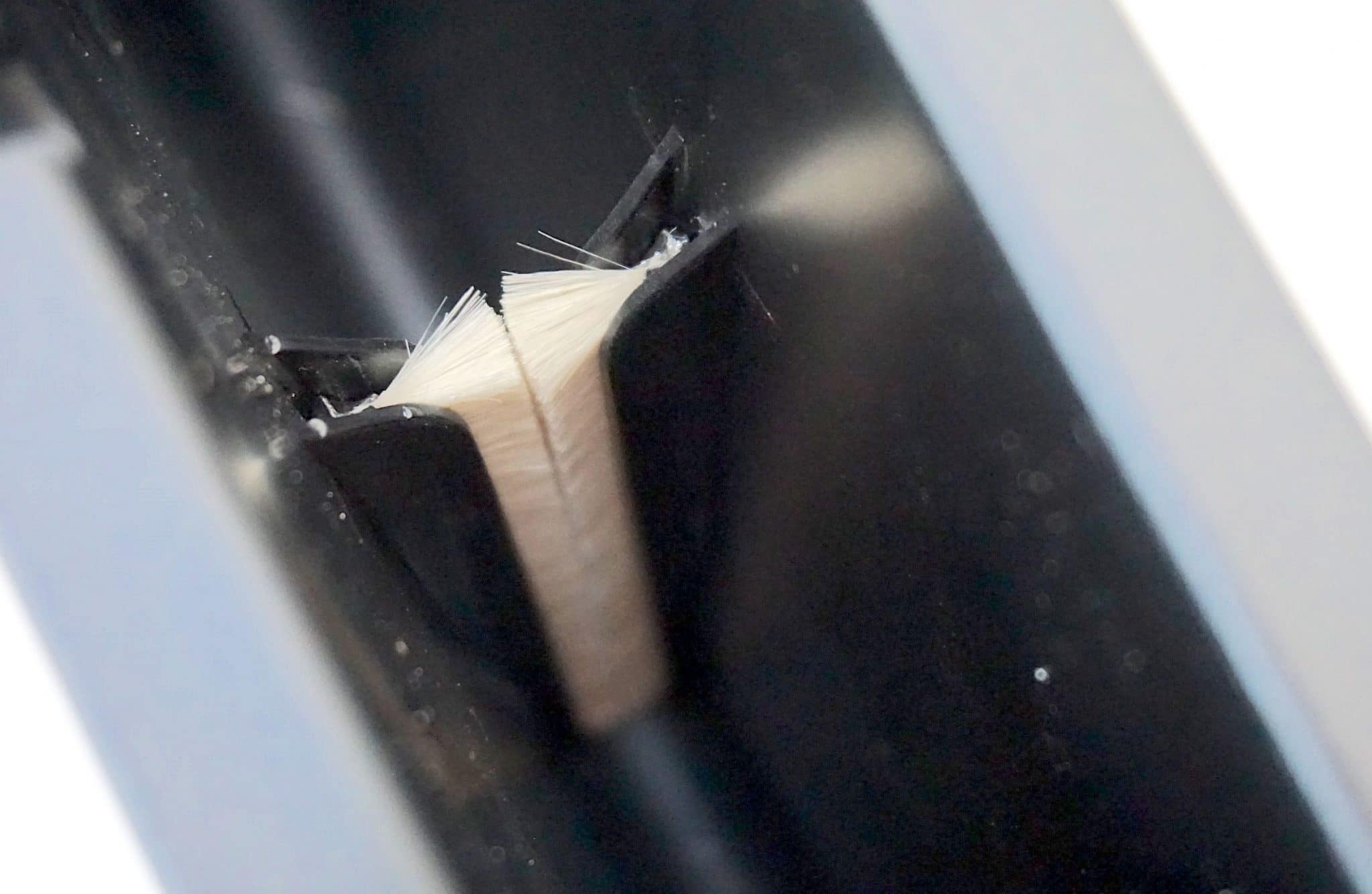
It’s these brushes that are, for me, the stars of the Disco-Antistat show. The general design is a good one. It’s simple to use. Sure the cleaning liquid helps a lot to help remove muck and grime but there is a certain degree of attrition (of a gentle nature of course, but still…) from the brushes that helped to remove as much baked-on oil from the groove walls and floor as possible. This is the oil that naturally leaches from within the vinyl itself and serves as the mythical ‘release agent’ to aid extraction from the record press. Because its never properly removed though, it tends to harden over time and it’s tough to remove in its entirety. It’s the latter that is the toughest obstacle to eradicate from any groove and these brushes do a great job in that respect. Certainly in terms of the price you pay. Attrition is a much neglected subject when vinyl cleaning is discussed but it’s critical, absolutely critical to successfully clean your records. The Disco-Antistat is actually one of the very few cleaners out there that accommodates this cleaning action type.
VS THE SPIN CLEAN?
Using my sound tests, its attritional abilities is also why I rate the Disco-Antistat above competitors like the more expensive Spin Clean Record Washer which, instead of a set of brushes, relies on pads to do the scrubbing. Pads just don’t cut it in cleaning terms. Strike that, they’re ok. Just not wonderful. They offer little or no attrition.
I performed a direct A-B comparison between the Disco-Antistat and the Spin Clean system, which looks very smart but uses those pads I mentioned instead of the brushes and the resultant cleaning performance was easy to hear. The Disco-Antistat was ahead in terms of sonic improvement.
Testing both jazz and rock, the Disco-Antistat produced a transparent output, more space in the soundstage than the Spin Clean. The Spin Clean produced improvements across the frequency spectrum, sure. It did improve the sound but I wanted more. The Disco-Antistat did go further in the production of a higher degree of reverb-infused, fragile moments like cymbal taps, for example.
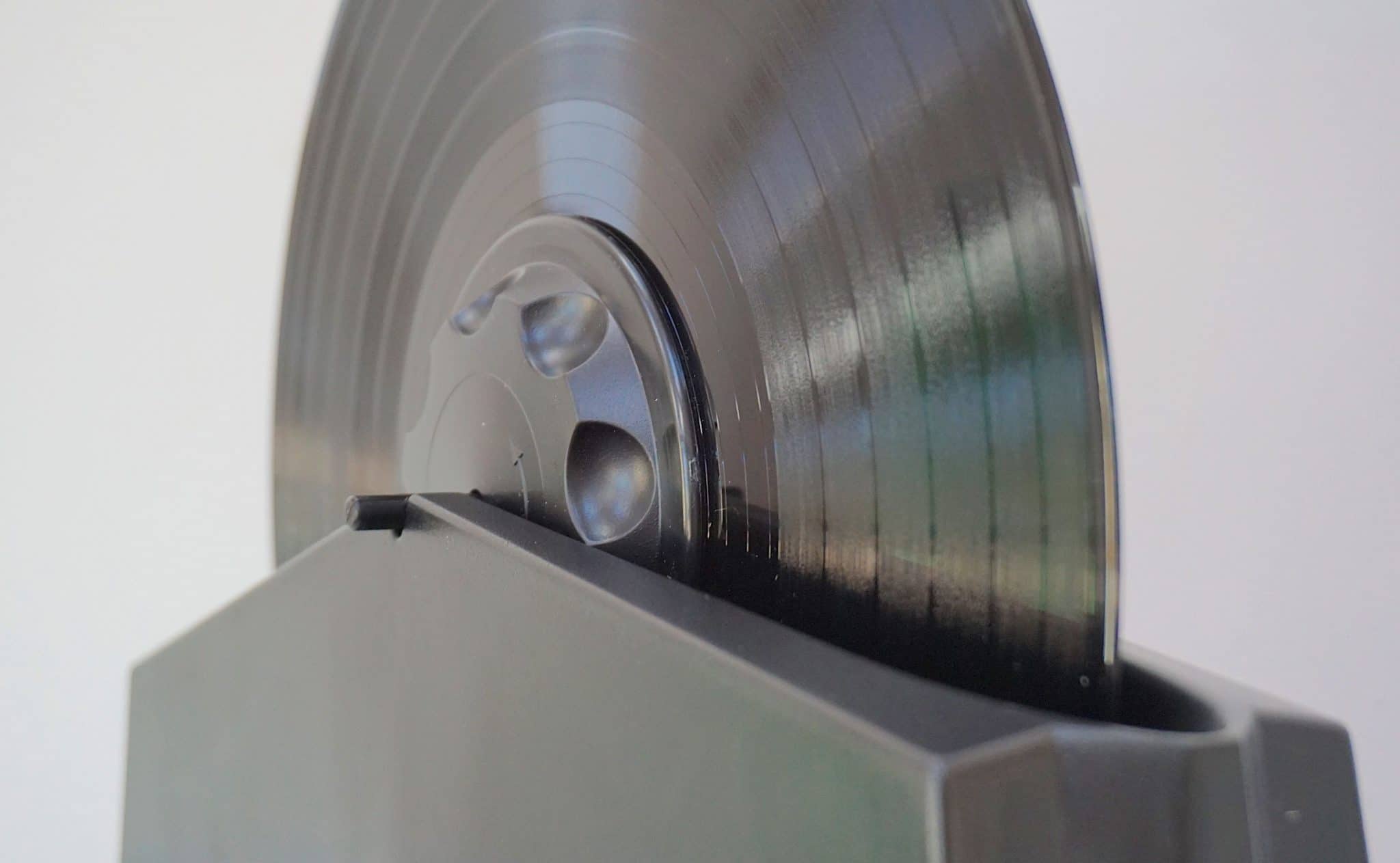
To repeat, the Spin Clean did do an admirable job. It’s not bad, in any way. It’s just that the Disco-Antistat is a better cleaning system. Again, point at the brushes for the reason for that.
DEPOSITS
I did have an issue with the Disco-Antistat liquid, though. Nothing sonic. More physical, I suppose. I have used the Disco-Antistat liquid in the past and I’m reviewing it now. And now, just as then, the liquid forms a deposit on the stylus as it plays. Which means that you’re constantly cleaning your stylus after every side of vinyl play. You can even see a build up after one single album track is played through. After cleaning my stylus, I repeated the play process. Same side, same LP and yes, there was more residue stuck to the stylus which demanded another clean. Which is irritating.
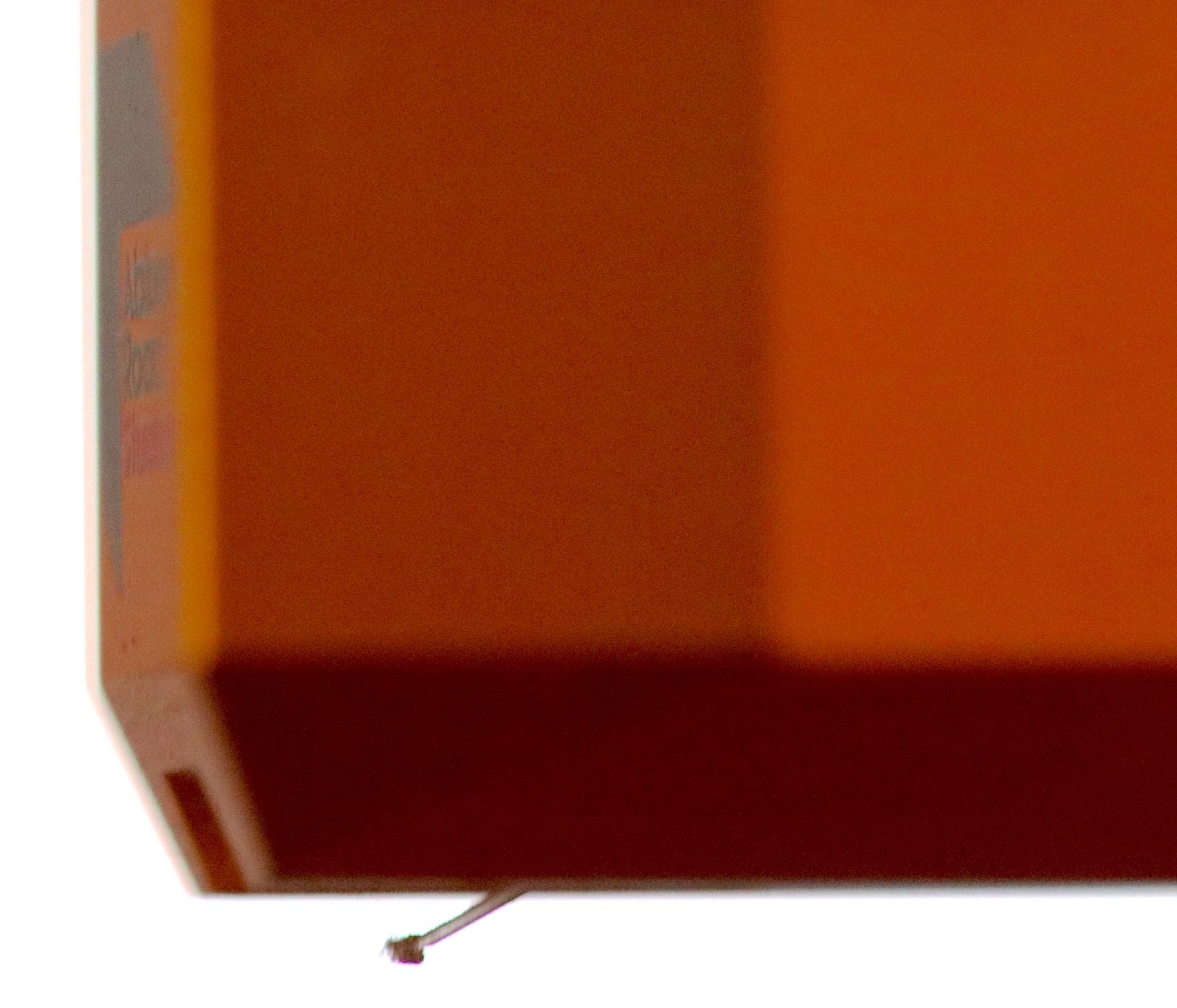
More than that, if your stylus is scooping up a residue off the groove walls and floor then that means the stylus is not as close to the vinyl itself and may very well be ‘playing’ the Disco antistatic liquid.
Just how many times would I have had to allow my stylus to run through these grooves before this residue stopped collecting? I wasn’t going to find out. Action needed to be taken.
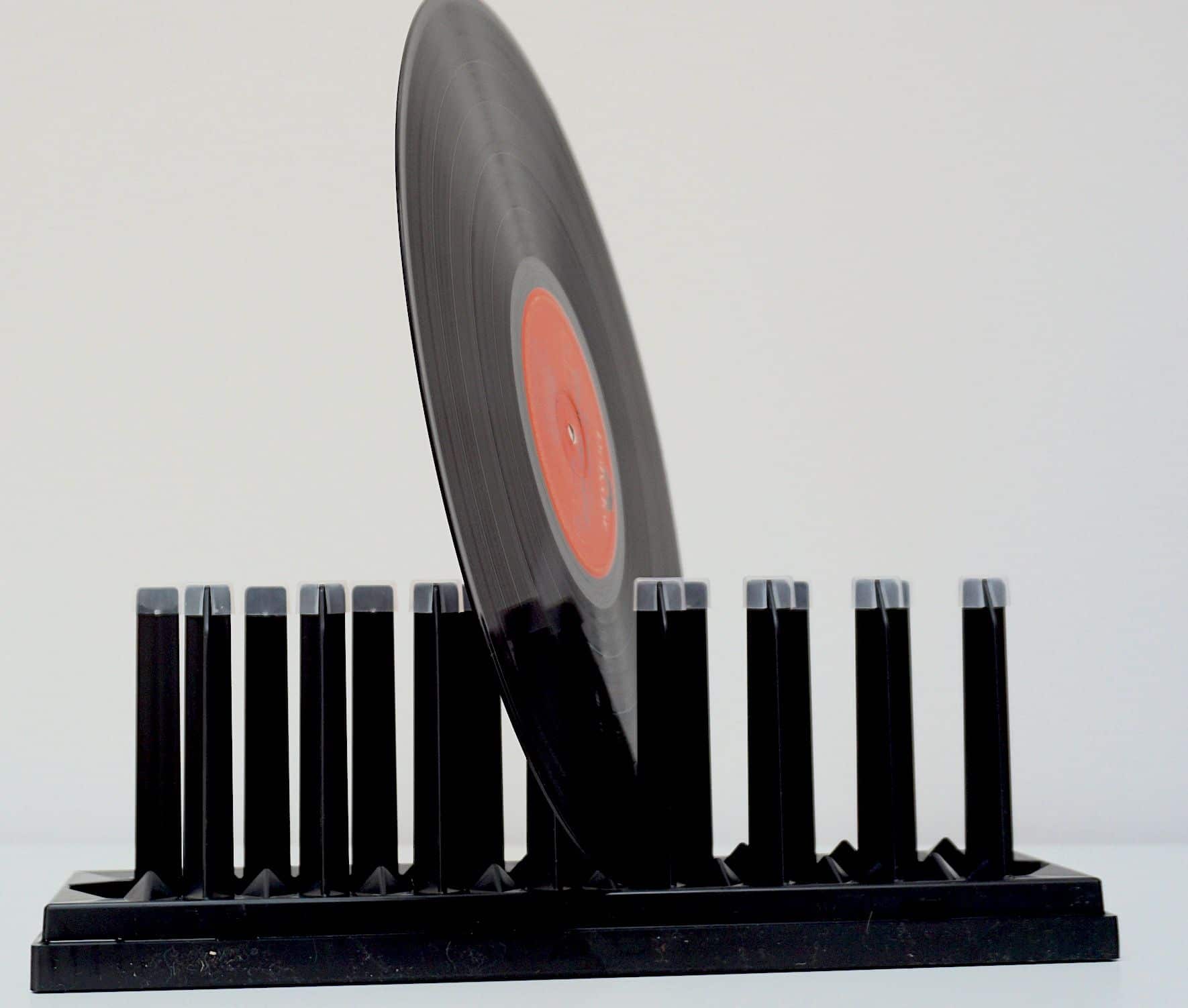
It also indicated that, quite possibly, performance could be improved still by the Disco-Antistat machine if a replacement formula could be used instead.
This is why I flew in my go-to bath liquid. A simple affair that I utilise when cleaning liquid in an ultrasonic cleaner, I use it in my ultrasonic cleaner’s bath. That is, pure distilled water plus 7% isopropyl alcohol.
I firstly cleaned the Disco-Antistat bath with distilled water and repeated the sonic tests. The results? No residue! Hurrah!

The sound also showed an increase in imagery around the central stereo image plus enhanced bass performance. Not excessively but enough to provide a better tonal balance. So the vocal now had a slight extra weight which gave the lead singer’s voice more structure and body. Bass guitar was prominent in the mix, allowing the ear to easily track it throughout while percussion had heft and power now. Even the vocal harmonies had a sense of chocolate smoothness that was missing earlier.
The extremes of the upper mids offered a touch of extra insight. Cymbal taps sounded like symbol taps and less like a snake hissing in the rear of the mix. That said, there was a fly in the ointment, a touch of hardness at times in the upper mids.
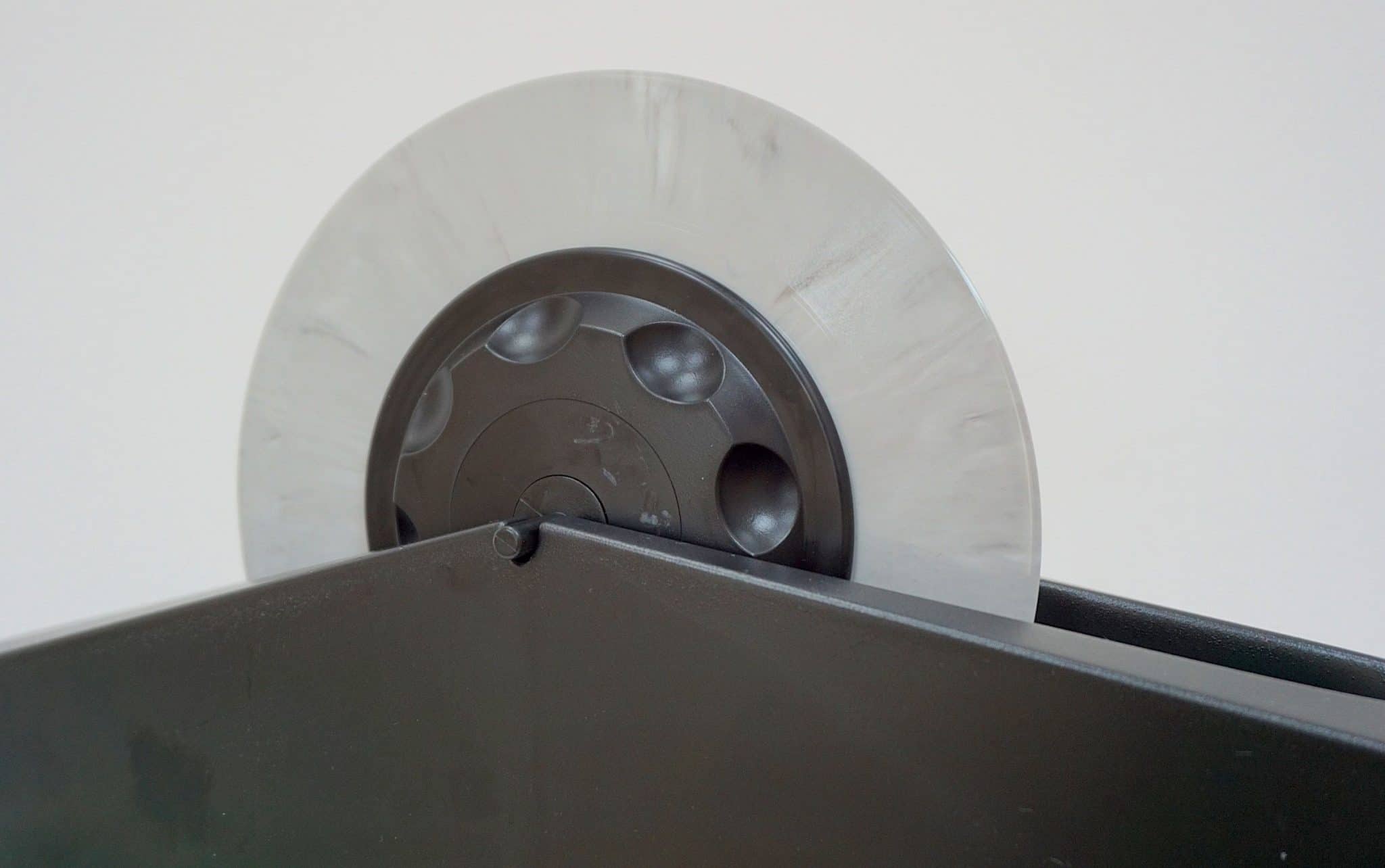
Nevertheless, I wanted to see if I could address that and possibly enhance the sound still further by bringing in my favourite surfactant combo. A mixture of distilled water, Glycol and Tergikleen (a Tergitol concentrate diluted into the water). I applied the solution directly to the disc with a Kabuki brush and pipette and spent a few moments pushing the surfactant deep into the grooves to remove any possible surface tension and to increase the cleaning effectiveness. The bath liquid remained the earlier alcohol/distilled water mix.
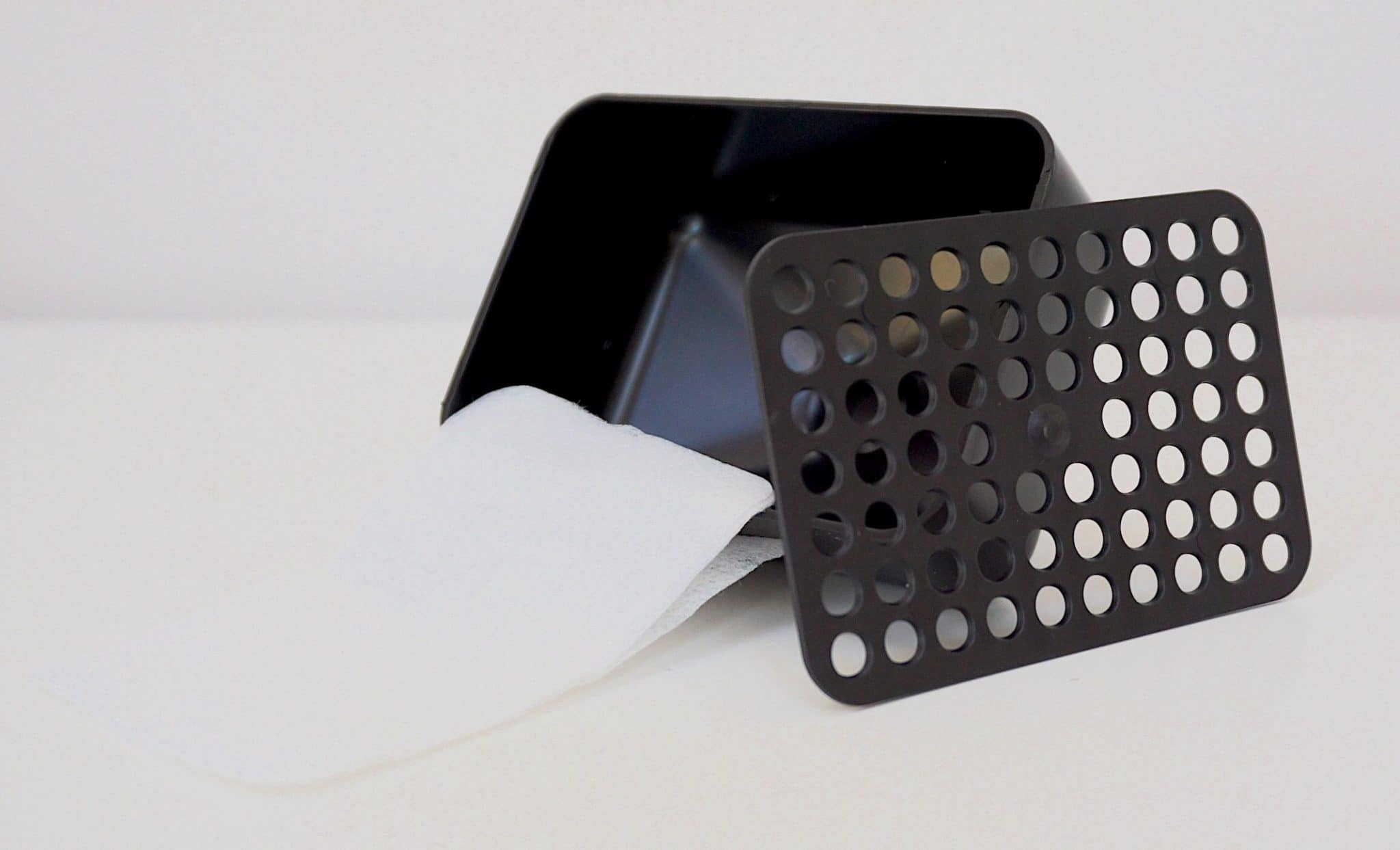
The sonic results were, for a manual cleaning machine, quite breathtaking. The sheer complexity of the information now on offer was absolutely magnificent. It was the delightful combination of dynamic reach and detail that was, at least initially, overwhelming. My ears darted here and there in an attempt to take it all in.
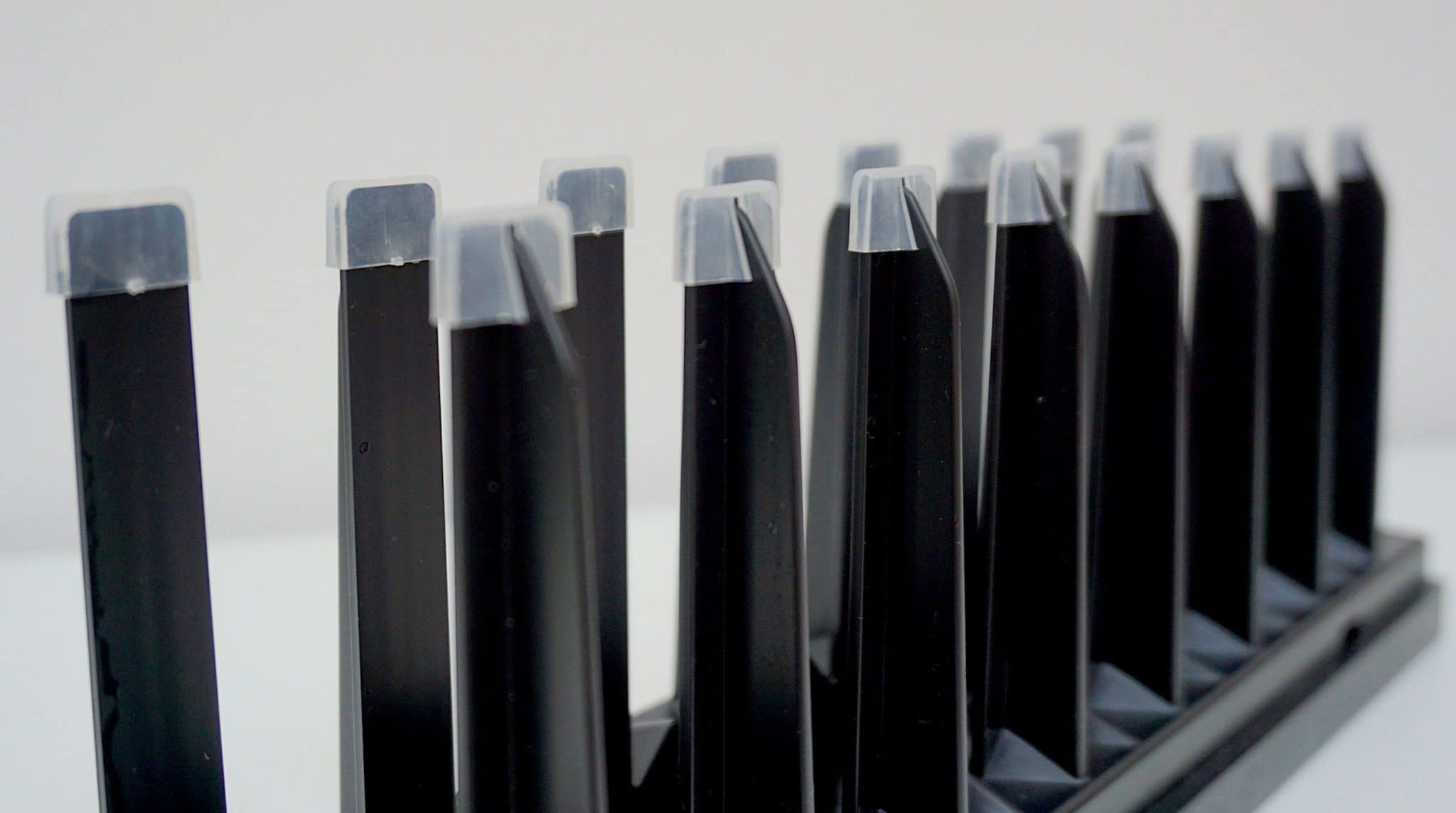
The lead vocal now had nuance and emotive intricacy instead of the earlier one-dimensional monolith that I was hearing before. The backing harmonies were packed with texture and a layered delivery. Percussion was tonally balanced and organic with it but retained power, guitars offered a weight in resonance terms but also a beautiful midrange insight and…well, I could go on for three sides of A4. I really could.
Oh and before I ended? I grabbed two old, pretty ragged records: one from Peggy Lee and another from James Taylor. Both exhibited cracks and pops during play and both needed some TLC. Both received it from the Disco-Antistat too. Cracks and pops reduced dramatically after the cleaning process. The play wasn’t completely silent sure but I noticed a second clean improved matters further and additional cleans would surely improve the sound down the line while I wondered if a few of those pops may very well have been the result of vinyl damage. Neither of my records – brought in from car boot purchases for the sake of this test – were in great condition. Physical damage is something no vinyl cleaner can fix. Still, the differences were stark and welcome after treatment.
And let me add now, the final rating I will apply is for the machine itself, not the liquid. I see the liquid as a bonus extra only. And you should see it that way too.
CONCLUSION
Easy to assemble and use, sturdy and strong in terms of build but with an affordable price to boot, the Disco Anstistat might not arrive with the perfect cleaning liquid but everything else about this vinyl cleaner is about as near to perfect as you’re going to get for the asking price.
Once you sort the correct preparation and cleaning liquid, the amount of information reaching the ear is impressive indeed. Giving the music you listen to an incredible maturity. If you do grab a sample, it will reward you with a quite stunning cleaning and sonic performance. I see the Disco-Antistat as the market leader in manual vinyl cleaning and, because of that, I’m giving it a rare full marks rating and a Golden Groovy award.
KNOSTI DISCO-ANTISTAT VINYL RECORD CLEANER
Price: £46.50
Website: www.tonar.eu
TO BUY CLICK BELOW:
EUROPE – https://amzn.to/2HXyDpS
GOOD: sonic performance, build, ease of use, feature set, cleaning brushes
BAD: bundled cleaning liquid, instructions
RATING: 10
TO BUY, CLICK BELOW:
FOR THE UK: https://amzn.to/3dyJH8I
FOR EUROPE: https://amzn.to/31dRBQ9
FOR THE USA CLICK: https://ebay.to/3bLMvi2
[Don’t forget to check out my new Patreon Page at www.patreon.com/audiophileman, for exclusive postings, giveaways and more!]
REFERENCE
Origin Live Sovereign turntable
Origin Live Enterprise 12″ arm
Icon PS3 phono amplifier
Aesthetix Calypso pre-amp
Icon Audio MB845 Mk.II Monoblock Amplifiers
Quad ESL-57 Speakers with One Thing mod
Audio-Technica AT-LP140XP turntable
Blue Horizon Professional Rack System
Harmonic Resolution Systems Noise Reduction Components
Gutwire Consummate Grounding Cable
Air Audio AC-2K Balanced Transformer
All vinyl was cleaned using an Audio Desk’s Ultrasonic Pro Vinyl Cleaner

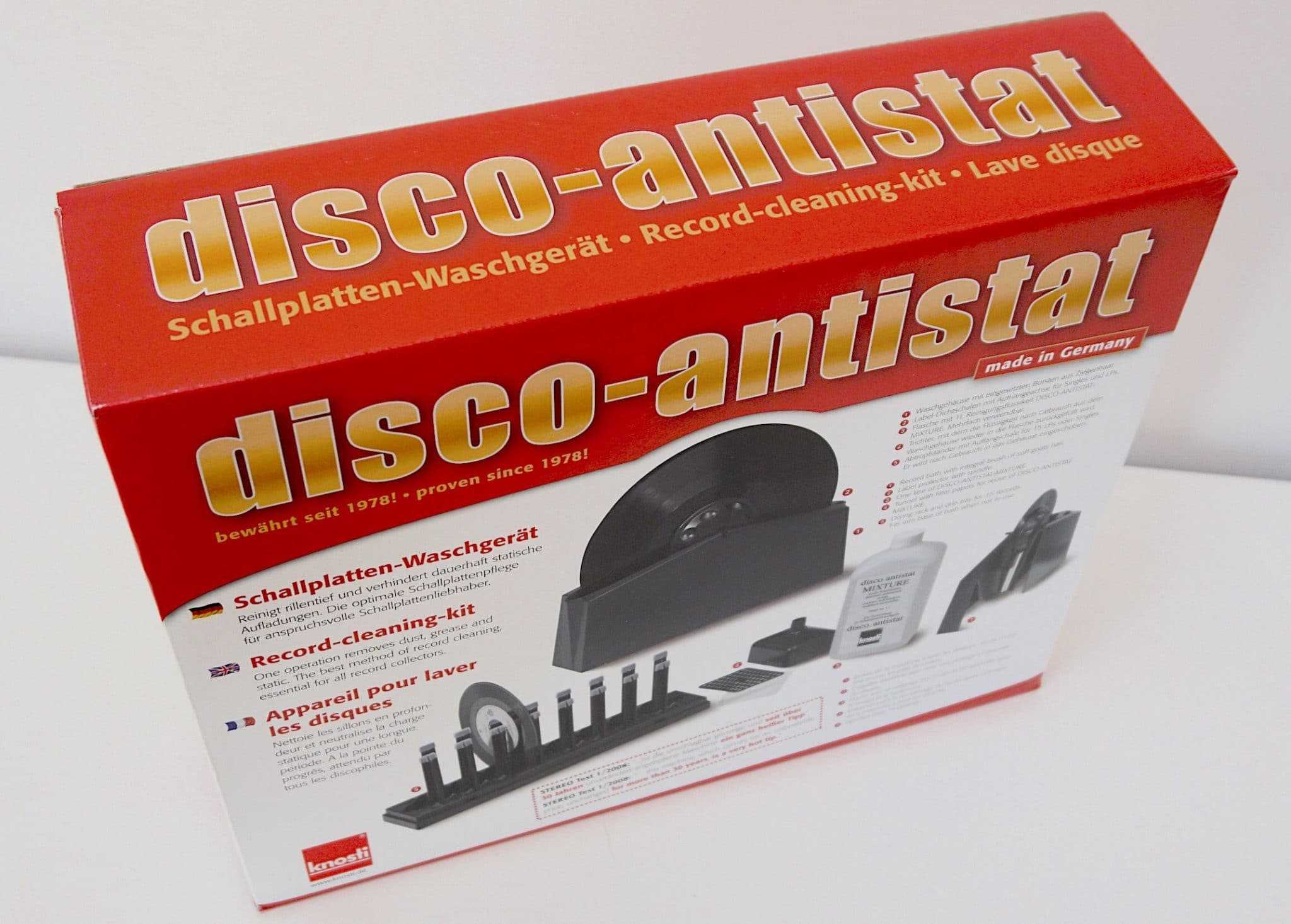
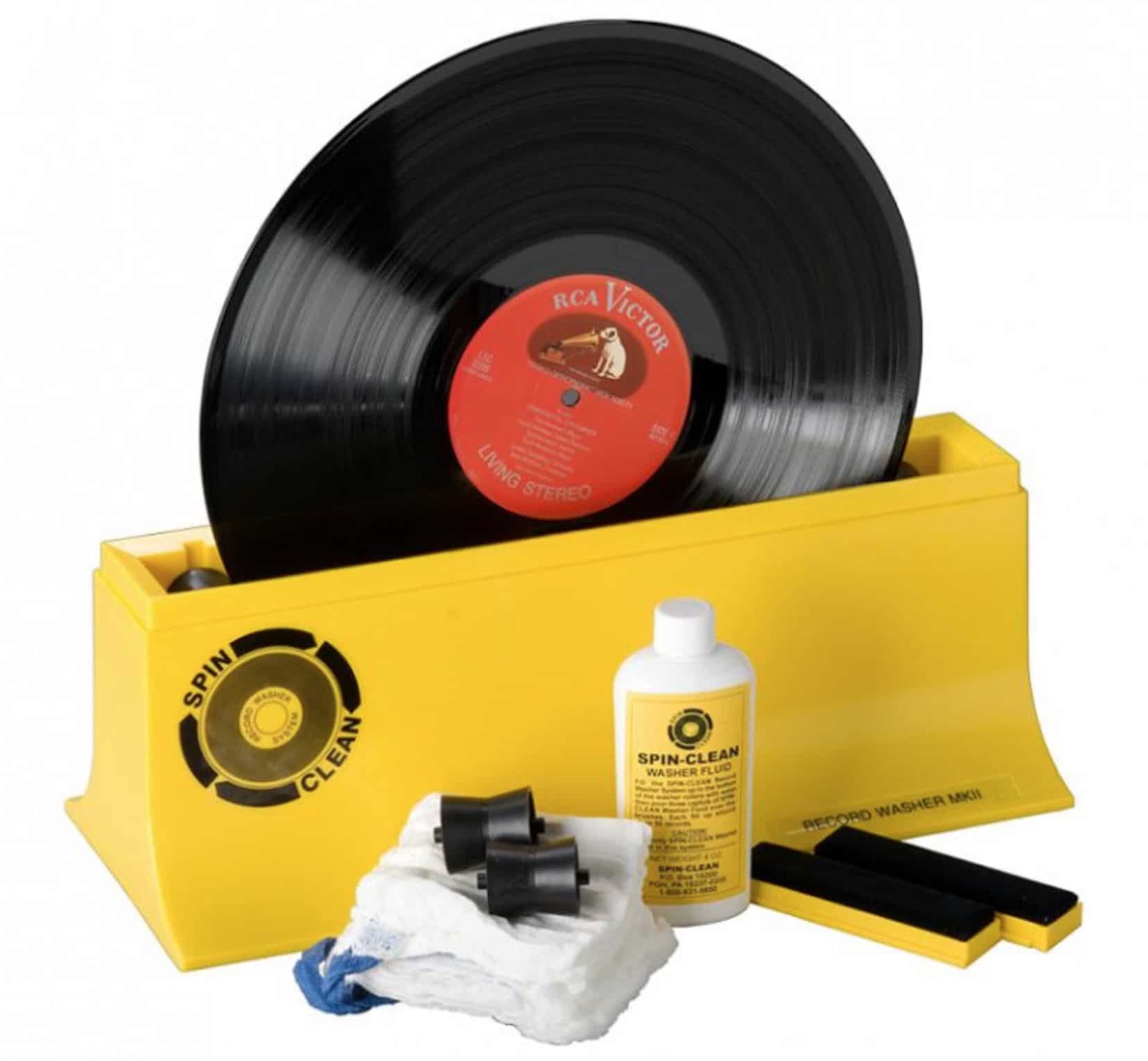
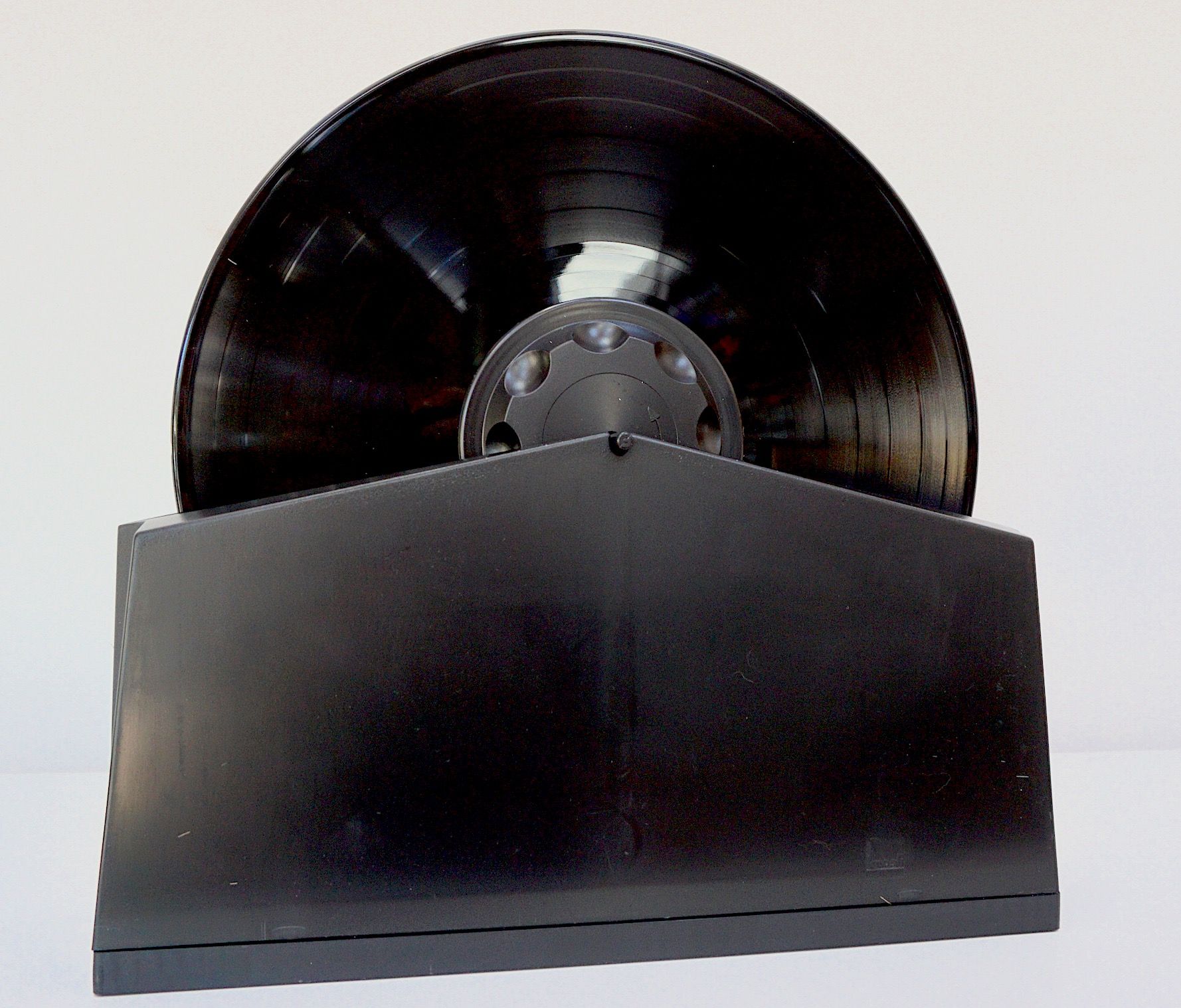
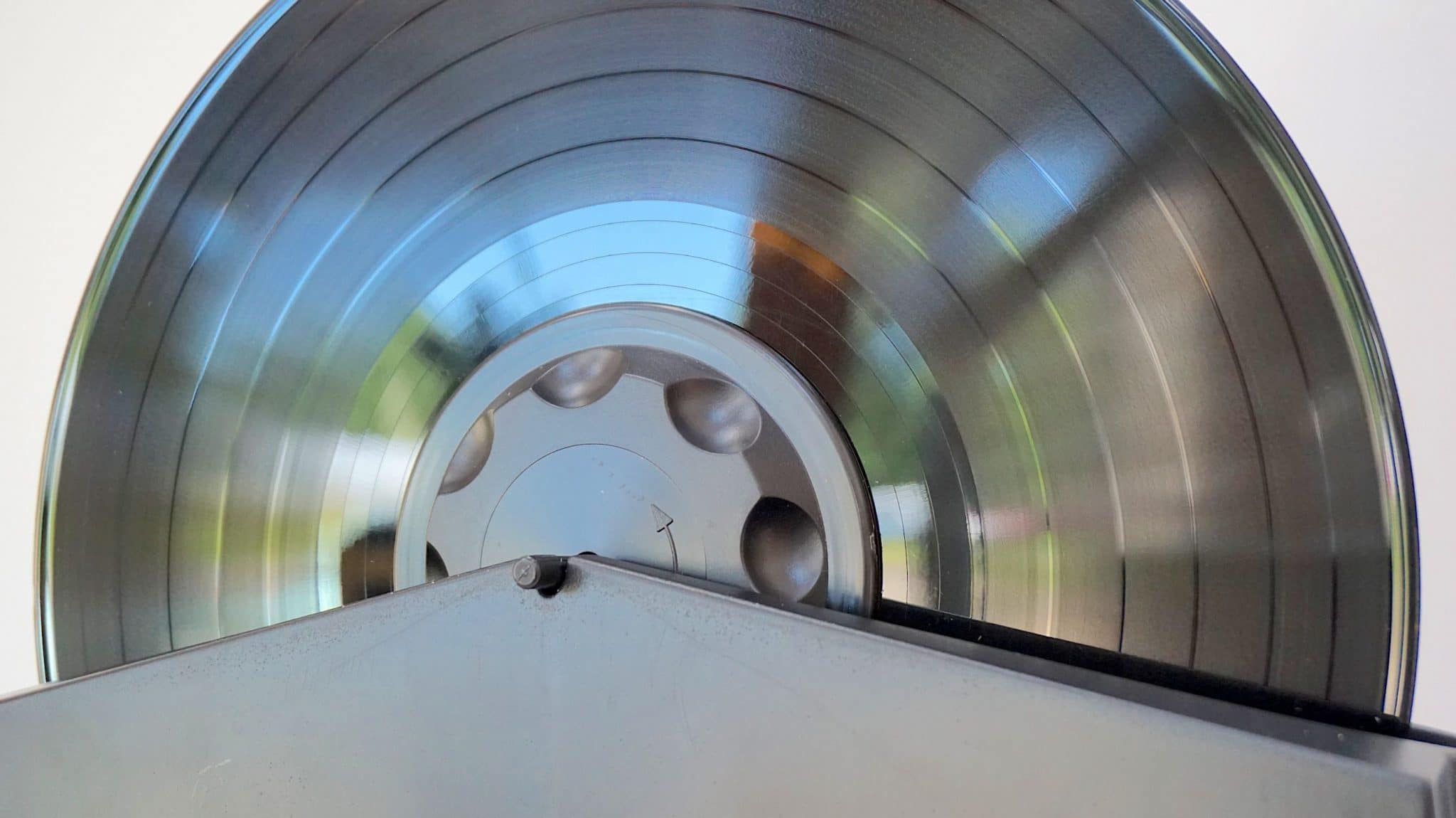
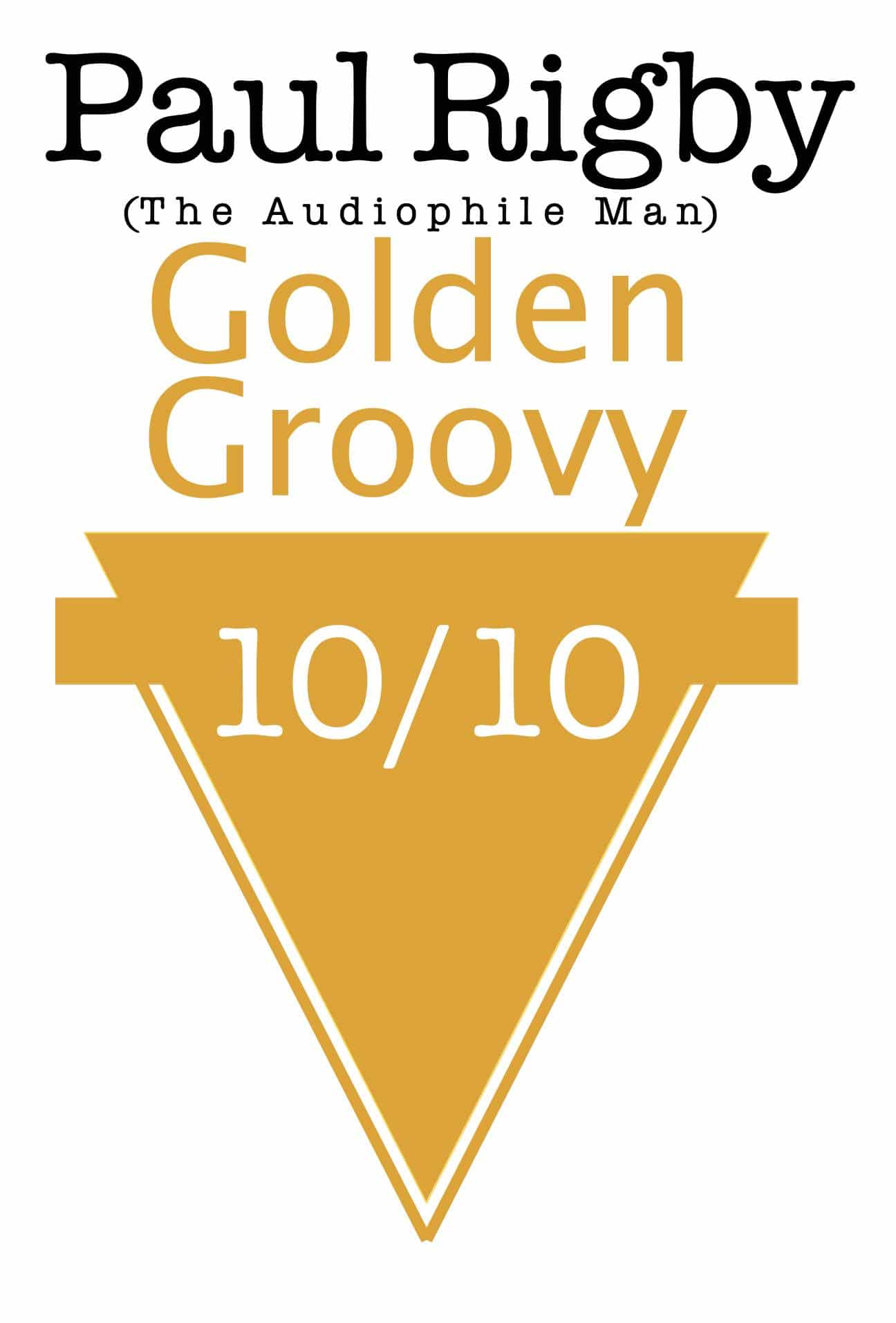


I’ve got a Knosti and tried adding a rinsing stage with distilled water but ended up with lots of static, be interested to know what went wrong. Currently also using Vinyl Shelter fluid with good results.
The hifi dealer I bought my speaker cables from offered a record cleaning service using an ultrasonic machine. I sent a few records over to see what happened and although they came back clean, i also got a load of static and they were very crackly. A re clean in the knosti sorted it but I’m guessing the problem was down to the fluid used by the dealer?
Hi SS – cleaning per se will add static to a vinyl record. The more intense the clean, the more static you will produce. That is, the more you move and shake things about, the greater the static attraction. I use an anti-static accessory as part of my regular regime, before I play my vinyl. What Id recommend you do – and it depends on your budget – is to grab a Zerostat. That will reduce static enough for it not to be an issue.
Hi Paul Rigby, greetings from Bulgaria. First, many thanks for your article concerning the issues that I encounter as well with my Disco Antistat cleaner.
I have missed to exactly understand completely the step-by-step approach (due to my lack of English). I guess there are three procedures described in the article for a perfect cleanup of a record:
A). Disco Antistat regular cleaning by spinning the record inside the bath of the Disco Antistat fluid.
B). A procedure with 93% destilled/dionized water and 7% isopropil alcohol – Is it rinsing or a bath. What is meant by bath in the article?
C). A mixture of distilled water, Glycol and Tergikleen (a Tergitol concentrate diluted into the water) with a Kabuki brush and pipette.
My questions are:
1. In what order shall I do the three procedures
2. for A) Is the Antistat fluid actually a concentrate. Do we need to mix it with destilled water
3. for B) what is meant by bath in the article. Can we do some kind of rinsing?
4. Can you share also the recipe for this solution and what percentage should each liquid take in the whole solution.
Sorry for my long questionnaire and thank you in advance,
Hi Lachezar – going through your questions from top down…
For ‘B’ I do recommend a rinse after washing, if you can: ‘clean’ the record in the Disco Antistat but don’t add the Tergikleen this time.
You only need 7% alcohol if you use Glycol. Otherwise, 1% is fine.
I don’t recommend using the Disco liquid. It produces a deposit on the stylus tip.
The “bath” I mention is the Disco’s container of liquid. That is, the distilled water/alcohol held in the chassis of the Disco Antistat.
I hope to release a video explaining recipes and procedures but for now:
Grab a bottle of Tergikleen and dilute as directed into a litre bottle or whatever you decided to use.
Grab a pipette bottle – https://www.amazon.co.uk/gp/product/B00IZOCRB8/ref=ppx_yo_dt_b_search_asin_image?ie=UTF8&psc=1
Grab a bottle of Glycol – I can provide a link to buy if you need one.
Take two pipette’s worth go Glycol and squirt that into the empty pipette bottle (a ‘pipette’ of glycol will be around half of the pipette vial).
Fill the rest of the pipette bottle with the diluted Tergikleen. Shake well.
The Glycol will prevent the surfactant falling from the vinyl via gravity. You need 7% alcohol to melt the glycol off the vinyl surface as the Disco Antistat cleans.
Once shaken, fill the pipette vial with the bottle’s liquid.
Address the vinyl record now.
Using the vial, draw a line of liquid from the run out groove to the outer edge of the vinyl disk a the 12, 3, 6 and 9 o’clock positions. You will be left with a four-stripe cross around your record.
Grab a Kabuki make-up brush. Buy the best you can afford. Ideal because they arrive with a stubbly bristle
Use that to evenly spread the liquid across the vinyl surface.
Then move your fingers towards the ends of the bristles, leaving a small amount of bristles at the tip. Doing this hardens the remaining bristle tips. Work the surfactant into the grooves in a spiral fashion – clockwise, then anti-clockwise.
Into the Disco antistatic with your vinyl – clean your record. Repeat several ties if necessary.
Remove and store in rack to dry.
Hey Paul, thanks for your elaborate reply. For now I will try as Malcolm said – bath in anti knosti and then in a second container, bath in destilled water to take away the residue from the first bath. The Glycol method sounds cool though, and will try it sometime in future to compare : )
Hi Paul
Can you please add the link to the Glycol you use please? Sorry but i found your instructions a bit confusing,
How many drops of glycol do you add to your mix, say one litre of distilled water how many drops of 7% alcohol how many drops of Glycol?
I’m currently using 1 litre of distilled water 3 drops of 70% isopropyl alcohol 5 drops of Tergitol 15-s-3 5 of drops Tergitol 15-s-9!
This does a very good job but im always seeking to improve it!
Thanks
Ro8 V
Have you seen my Guide? This is a review. The Guide might be more applicable: https://theaudiophileman.com/vinyl-cleaning-guide-part-1-manual-cleaning/
Hi mate,
Any massive disadvantages or problems from using De- Ionised water as opposed to Distilled. Can’t really find a definitive answer one way or another.
Hi Michael – deionised is good but there’s all kinds of bacteria floating around which is not eradicated. It is in distilled, though.
Appreciate the review and posts are now several months old, but just wondering if anyone knows whether the replacement brushes for the mk2 version of this machine, will fit into the Mark 1 (which is the machine reviewed here).
Thanks for any input
Also, how do you remove the brushes? Mine seem to be well and truly “jammed” in…I can’t get my fingers down far enough to pull the brushes out either.
Hi Paul,
Regarding the Disco Antistat (of which I already owned 2 kits in the hope of getting the job done slightly quicker) I laboured on for months with my own formula fluid, which only ‘worked’ to a point. Having then studied your follow-up vlogs on your fluid formula and surfactants, I bought your recommended ingredients and slavishly followed your mixing instructions. I can now report the results were beyond my wildest dreams, and constituted my most meaningful upgrade to pleasurable listening; every improvement was as you reported. Thank you.
Many thanks, John – glad you found sonic improvements from your vinyl.
Thanks Paul; any chance of an iFi Zen Phono and/or a Goldring 1006 review please?
I’ll make a note 🙂
Hi Paul
Very good information here, along with your companion piece on manual record cleaning. One thing I’ve picked up from formulae discussed in various fora is the addition of a ‘quat’ quaternary ammonium fluid which has (a) an antimicrobial action and (b) an antistatic benefit. Dilutions are very low. For example, the BAC50 I have on order will be added at 1ml per litre. Some recipes also include an flocculant to help clump all the detritus from the grooves such that it sits at the bottom of the bath rather than in suspension. My BAC50 arrives this week, so I’ll be adding it to the first bath. The second bath will just be the 93% distilled water, 7% IPA mix.
I have a third bath that could be run empty with a view to trying a DIY vacuum cleaning technique. However, that would involve splashing out ¬£40 on a wet and dry cleaner. Mind you, in the context of the price of vinyl LPs, it’s hardly a bank breaker.
Hi Paul,
Would love to read a review from you of the newest Ultrasonic Disco Antistat.
I loved your review of the Degritter but the price is a bit steep for me.
The Knosti Ultrasonic is about £1200.
Any chance you can get your hands on one for review?
Best regards
Paul
Hi Paul – oddly enough, I requested one yesterday. Bit spooky, eh?
I second Paul’s interest. If it’s better than the Humminguru (very likely), I might count myself in. I’d also like to know if any improvement over the present Antistat justifies the additional cost. (Paul, I know that’s a subjective call, but your opinion would help.)
That’s great!
I almost hit the button on one today, now I’ll wait for your honest opinionüòä
Hi Paul, great article – I’m going through your YT back catalogue as I find your reviews some of the more balanced of the ones out there – or maybe our thoughts are slightly better aligned. Many years ago I treated a lot of my vinyl to a process called Permastat by Milty. Basically a spray that was brushed into the grooves and prevented static build up on the record. I’m wondering what the effect of cleaning will have on treated records. I guess I’ll have to try one and see. I bought the Antistat out here in Germany (45 euros compared to ¬£50 in the UK) and will ship it back when I next come home. I may retain the enclosed cleaning solution for a prewash but will go to your suggestion of 1% alcohol for the final clean to avoid the deposit buildup.
The days of the Dustbug and cleaning the stylus with a tiny brush dipped in Vodka seem so long ago!
Hi Wilf – I loved Milty’s Pixall roller way back when. It was my first serious vinyl cleaner. I still have the Mk.II somewhere (I began with the big Mk.1 which looked like a roller from a cricket ground) The issue of the Permastat is that it deposits spray into the groove and then the stuff stays there and it *will* be played by the stylus. Anything in the groove is ‘played’. No matter what is in there, it is ‘played’. This is why, even when I clean using a Disco antistat or an Ultrasonic cleaner, I employ a rinse cycle. You need to remove all foreign matter or liquid if you want the groove itself to be played. Otherwise, you’re going to experience veiled detail.
Thanks for taking the time to reply – I guess I’m going to need a lot of distilled water/isopropyl over the coming months! I’ve also got a zerostat 3 that I bought in Germany but I’ll wait until I fly back with a checked in case rather than risk taking it through security in hand luggage!
Hi Paul,
Just wondered if knots sent you out the Ultrasonic to review?
Best regards
Paul
Not yet – complete and utter silence from the chaps, I’m afraid. I’ll nudge them.
OK – nudged them. Let’s hope I get a reply this time.